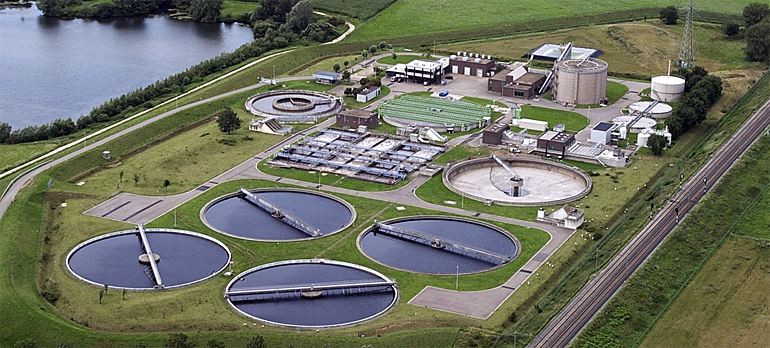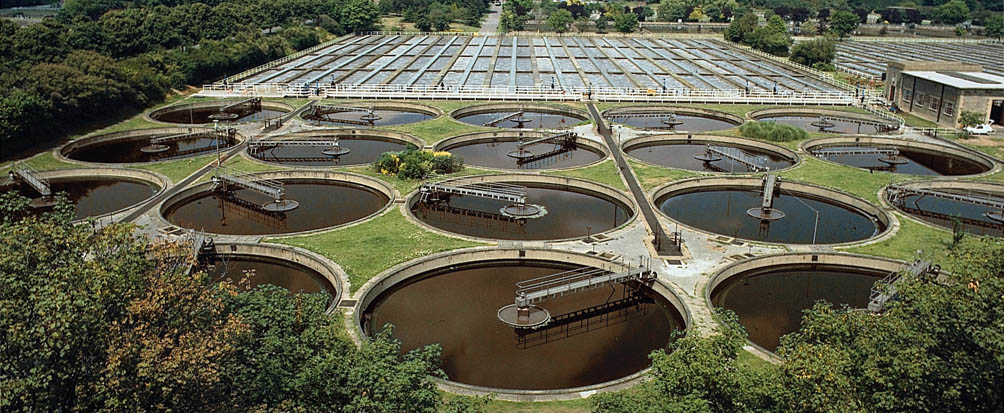Comprehending Wastewater Therapy Processes and Their Environmental Effect
The details of wastewater therapy processes play a crucial function in mitigating ecological challenges associated with water air pollution. Each phase, from initial to innovative therapies, is designed to resolve particular impurities, inevitably securing both public wellness and marine environments.
Introduction of Wastewater Therapy
How is wastewater transformed into a risk-free resource for the setting? Wastewater therapy is a crucial procedure created to eliminate pollutants from made use of water, thereby securing public wellness and shielding communities. This procedure starts with the collection of wastewater from property, industrial, and industrial resources, which is after that directed to treatment facilities.
At these centers, numerous physical, chemical, and organic approaches are used to treat the wastewater. Initial testing gets rid of big debris, adhered to by sedimentation to separate much heavier solids. Consequently, biological treatments, such as activated sludge processes, utilize microorganisms to break down natural matter. These approaches not only decrease pollutant degrees yet additionally promote the recuperation of important nutrients.
The dealt with effluent can be securely discharged into natural water bodies or reused for watering and commercial functions, promoting source preservation. In addition, the treatment process produces biosolids, which can be repurposed as plant foods or soil amendments, better improving sustainability.
Stages of Treatment Procedures
The wastewater therapy procedure normally includes 3 key phases: initial, key, and secondary treatment. Each phase serves a distinctive function in reducing the contaminant tons and making certain the effluent meets ecological requirements prior to discharge.

The primary treatment phase concentrates on the physical splitting up of suspended solids from the wastewater. With sedimentation, heavier particles resolve at the bottom of sedimentation storage tanks, developing sludge, while lighter materials, such as oils and oils, float to the surface area and are skimmed. This process considerably minimizes the organic and not natural lots in the wastewater.
Second treatment is a biological process intended at further lowering the focus of natural matter. This stage is crucial for achieving the essential biochemical oxygen need (BODY) decrease, ultimately leading to cleaner effluent all set for discharge or more treatment.

Advanced Therapy Technologies
Following the second treatment processes, progressed treatment modern technologies play a vital function in further boosting the high quality of treated wastewater. These technologies are made to get rid of recurring contaminants that are not successfully gotten rid of during primary and second treatments, More about the author guaranteeing the effluent fulfills strict governing standards.
Amongst the widely used innovative treatment approaches are membrane purification, reverse osmosis, and advanced oxidation processes. Membrane layer filtration, including microfiltration and ultrafiltration, works in separating fine bits, virus, and colloids from the water (Wastewater). Reverse osmosis makes use of semi-permeable membranes to remove dissolved solids, leading to top quality water appropriate for numerous applications
Advanced oxidation procedures (AOPs) use strong oxidants to deteriorate organic contaminants, consisting of drugs and individual treatment items that are immune to conventional treatment. These approaches boost the biodegradability of intricate substances, promoting their elimination.
An additional substantial technology is using biological nutrient removal processes, which specifically target nitrogen and phosphorus, avoiding eutrophication in receiving water bodies. In general, sophisticated treatment modern technologies are vital for accomplishing greater levels of purification, promoting water reuse, and securing public wellness while resolving the obstacles connected with wastewater monitoring.
Ecological Benefits of Treatment
Various ecological advantages emerge from reliable wastewater therapy processes that add to ecosystem health and sustainability. Largely, these procedures substantially minimize the launch of dangerous contaminants into all-natural water bodies, which helps preserve aquatic ecosystems. By getting rid of impurities such as heavy metals, nutrients, and virus, treated wastewater mitigates the danger of waterborne illness and promotes biodiversity in aquatic atmospheres.
Furthermore, wastewater therapy facilities frequently use sophisticated technologies that allow water recycling and reuse. This technique not only preserves freshwater sources however also minimizes the demand on all-natural water supplies. Boosted nutrient elimination from wastewater can likewise prevent eutrophication, a process that leads to algal flowers and subsequent oxygen exhaustion in aquatic systems.
Furthermore, reliable treatment processes can decrease greenhouse gas emissions, specifically methane and nitrous oxide, which are usually released during unattended wastewater decay. By catching and using biogas from anaerobic digesters, facilities can transform waste into sustainable power, thus adding to a decrease in fossil gas dependency.
Difficulties and Future Fads
While the ecological benefits of wastewater therapy are clear, numerous challenges continue that prevent optimal results in this field. One major concern is maturing infrastructure, which usually results in inadequacies and raised operational costs - Wastewater. Several treatment plants were developed decades back, and their capacities do not straighten with modern demands, which include stricter governing requirements and greater quantities of wastewater as a result of urbanization

Looking in advance, there is an expanding focus on source recovery and round economic situation principles within wastewater treatment. Technologies such as anaerobic food digestion, which can produce biogas, and progressed filtering innovations are obtaining traction. These methods not just boost treatment performance but additionally promote sustainability.
Ultimately, resolving these difficulties requires partnership among stakeholders, investment in innovation, and a dedication to continuous study. By accepting these fads, the wastewater treatment field can develop to fulfill the demands of a transforming setting and culture.
Conclusion
In final thought, wastewater therapy procedures play an important role in improving environmental high quality and public health and wellness. The multi-stage therapy structure, paired with innovative modern technologies, effectively mitigates air pollution and advertises lasting water administration.